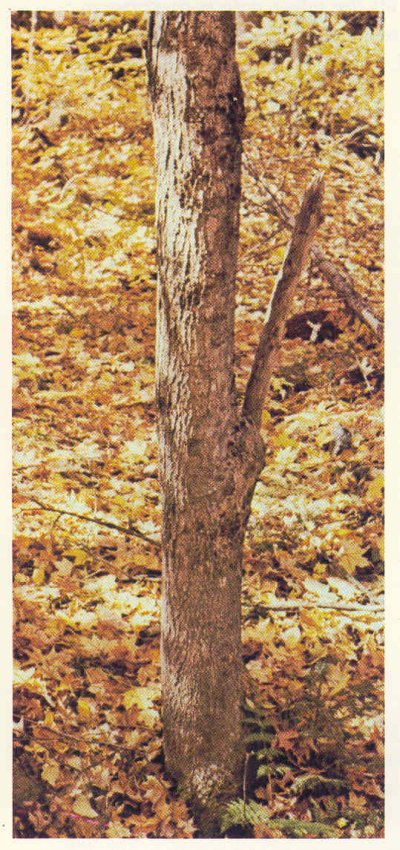


This sugar maple (left) has a low stub, but the base is free of wounds. The long stub of hard wood shows that the stub has not been dead or symplastless very long, and that the discoloration processes have not had time to progress to an advanced stage.

Dissection (right) reveals the pattern of discoloration. The wood at the base is clear. The column of discoloration from the large stub dwindles toward the base, but joins above with a wider column of discoloration from an older stub above, where the processes are more advanced. The wood formed after the stubs died remains free from discoloration. These discolored tissues are not heartwood.
(SHIGO AND LARSON, 1969 pg 18-19)
Dictionary MAIN PAGE
Text & Graphics Copyright 2004 Keslick & Son Modern Arboriculture
Please report web site problems, comments and words of interest, not
found.
Contact